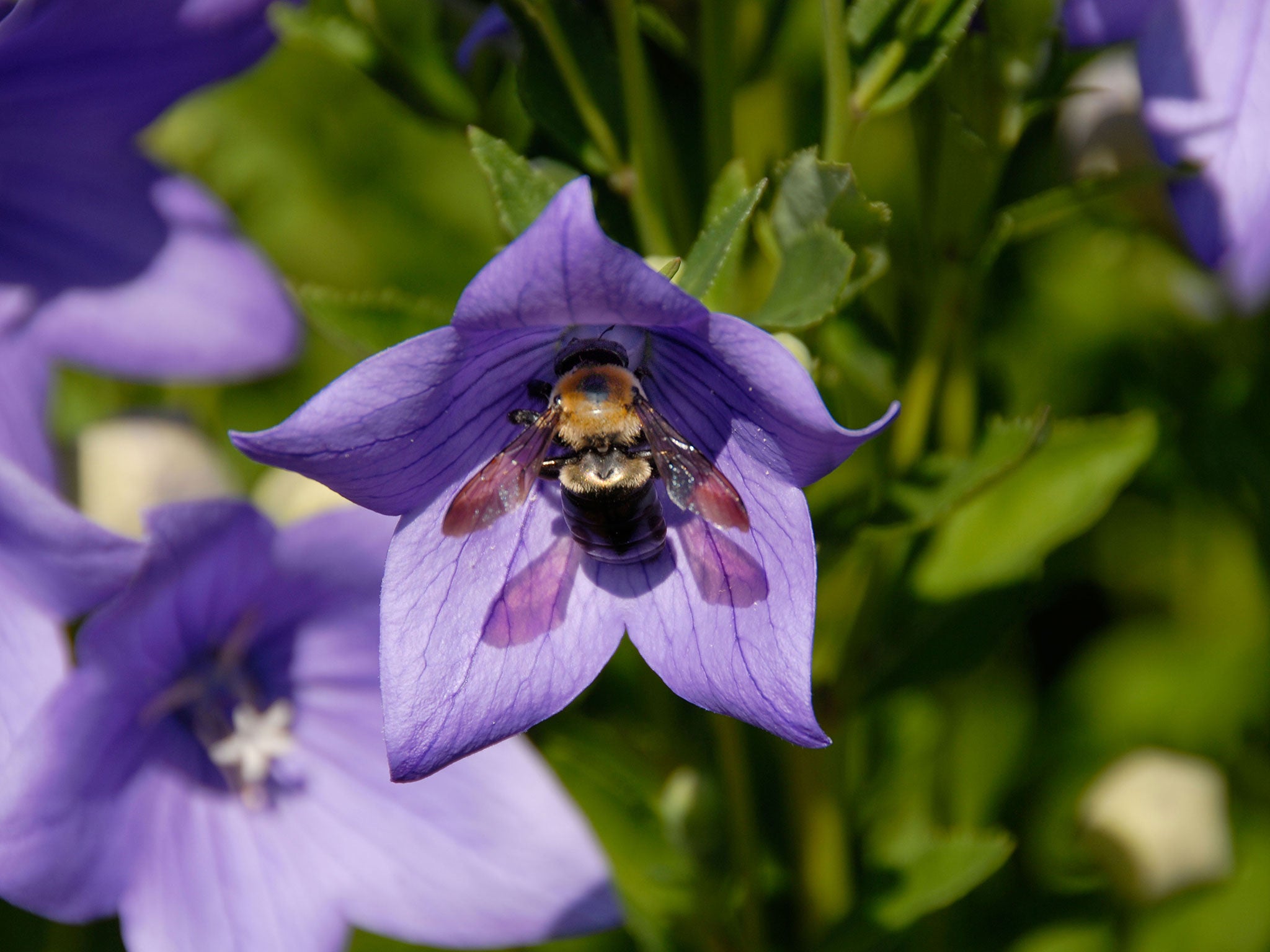Bees in the Rocky Mountains are evolving shorter tongues to adapt to warmer summers
Scientists believe the insects reflect changes to the flowers on which they feed

Warmer summers are causing bees in the Rocky Mountains of the US to have shorter tongues, scientists have discovered.
In an example of evolution at work, researchers found that the long tongues of two bumblebee species at high altitudes in the Rockies have become shorter over a 40-year period; this has coincided with a significant rise in summer temperatures.
The scientists believe the bees are evolving quickly in order to adapt to the changing flowers on which they feed, with the deeper flowers and longer tongues being replaced by shorter flowers whose nectar is more efficiently exploited by short-tongued bees.
A team led by Nicole Miller-Struttmann of the University of Missouri in Columbia studied several high-altitude sites in Colorado where two species of long-tongue alpine bumble bee – Bombus balteatus and B. sylvicola – are the main flower-feeding insects.
In a study published in the journal Science, the researchers measured changes to the tongue length of the bees from museum specimens collected from 1966 to 1980, and from those gathered from 2012 to 2014. They found a significant shortening of tongues which could not be explained by a change to smaller body sizes.
The scientists ruled out the possibility that other bees or pollinating insects had invaded and displaced the longer-tongued bees; this left them with only one plausible explanation – the flowers themselves had changed.
A survey of the region’s flowers did indeed show that the deeper flowers favoured by long-tongued bees had been largely replaced by shallower flowers. This shift from flowers with deep corollas – the inner floral tube holding the nectar at the base – to shallower corollas was caused by a significant shift towards warmer summers.
“Our analyses suggest that reduced flower density [of blooms with longer corollas] ... is driving this shift in tongue length,” the researchers say. “In remote mountain habitats – largely isolated from habitat destruction, toxins, and pathogens [diseases] – evolution is helping wild bees keep pace with climate change.”
Join our commenting forum
Join thought-provoking conversations, follow other Independent readers and see their replies
Comments